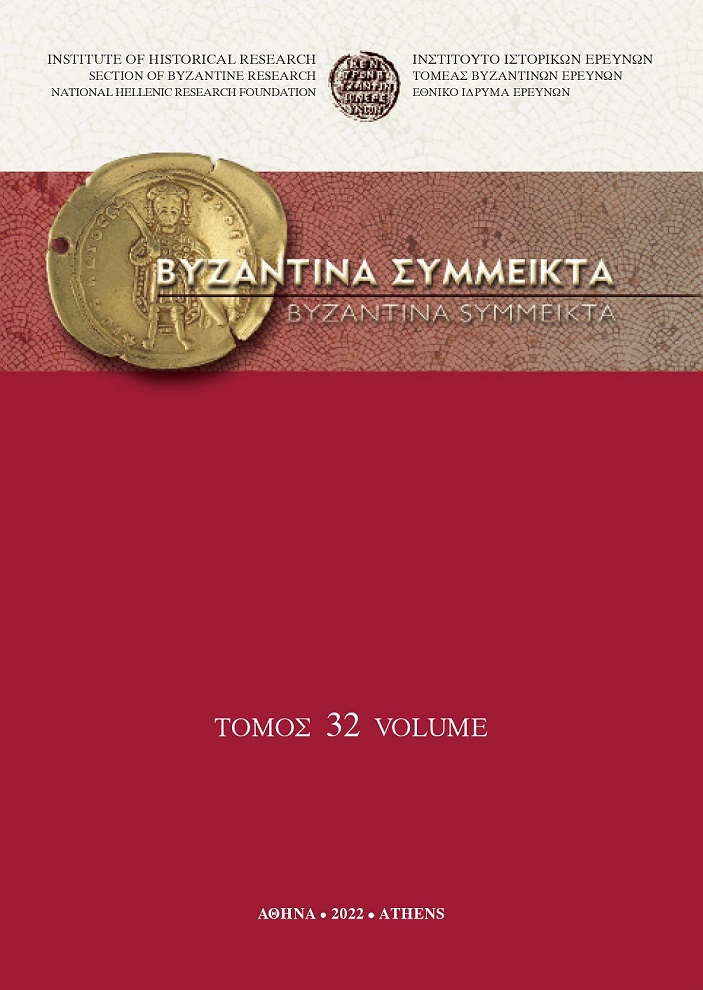Ο πόλεμος φθοράς και η τακτική της εξαπάτησης και του αιφνιδιασμού στις πολεμικές επιχειρήσεις του Βυζαντίου (11ος-13ος αι.)

Abstract
Theory (as attested by the military manuals) and practice prove that attrition warfare and the associated military tactics of deception and surprise played an important role in the byzantine military history. The paper studies cases of attrition warfare and surprise attacks exercised by the Byzantines from 11th till 13th century. Important military leaders such as Alexios I Komnenos were masters of attrition warfare and used skillfully that strategy whenever an open battle against a strong opponent was very precarious.
The Byzantines took advantage of the Balkan and Asia Minor mountainous terrain as well as the recruitment of foreign fast moving troops armed with long range shooting weapons that facilitated the exercise of tactics of deception and surprise. These military tactics were mostly successful against the Latins while were occasionally successful against the Seljuks and the Turkomans. The paper concludes that attrition warfare and the tactics of deception and surprise were more often applied during the 13th century –a period that Byzantium’s military resources and capabilities diminished– thus being a distinctive byzantine method of warfare and gave rise to an active role of the infantry who under special circumstances could threaten the western cavalry.
Article Details
- How to Cite
-
ΚΑΝΕΛΛΟΠΟΥΛΟΣ Ν. Σ. (2022). Ο πόλεμος φθοράς και η τακτική της εξαπάτησης και του αιφνιδιασμού στις πολεμικές επιχειρήσεις του Βυζαντίου (11ος-13ος αι.). Byzantina Symmeikta, 32, 83–102. https://doi.org/10.12681/byzsym.27147 (Original work published February 28, 2022)
- Issue
- ΒΥΖΑΝΤΙΝΑ SΥΜΜΕΙΚΤΑ 32
- Section
- Articles

This work is licensed under a Creative Commons Attribution-NonCommercial-ShareAlike 4.0 International License.
Copyright: The copyright for articles in this journal is retained by the author(s), with first publication rights granted to the journal. By virtue of their appearance in this open access journal, articles are free to use (with the exception of the non-granted right to make derivative works) with proper attribution for non-commercial uses (licence Creative Commons 4.0). NHRF retains the worldwide right to reproduce, display, distribute, and use articles published in BYZANTINA SYMMEIKTA in all formats and media, either separately or as part of collective works for the full term of copyright. This includes but is not limited to the right to publish articles in an issue of the Journal, copy and distribute individual reprints of the articles, authorize reproduction of articles in their entirety in another NHRF publication, and authorize reproduction and distribution of articles or abstracts thereof by means of computerized retrieval systems.




